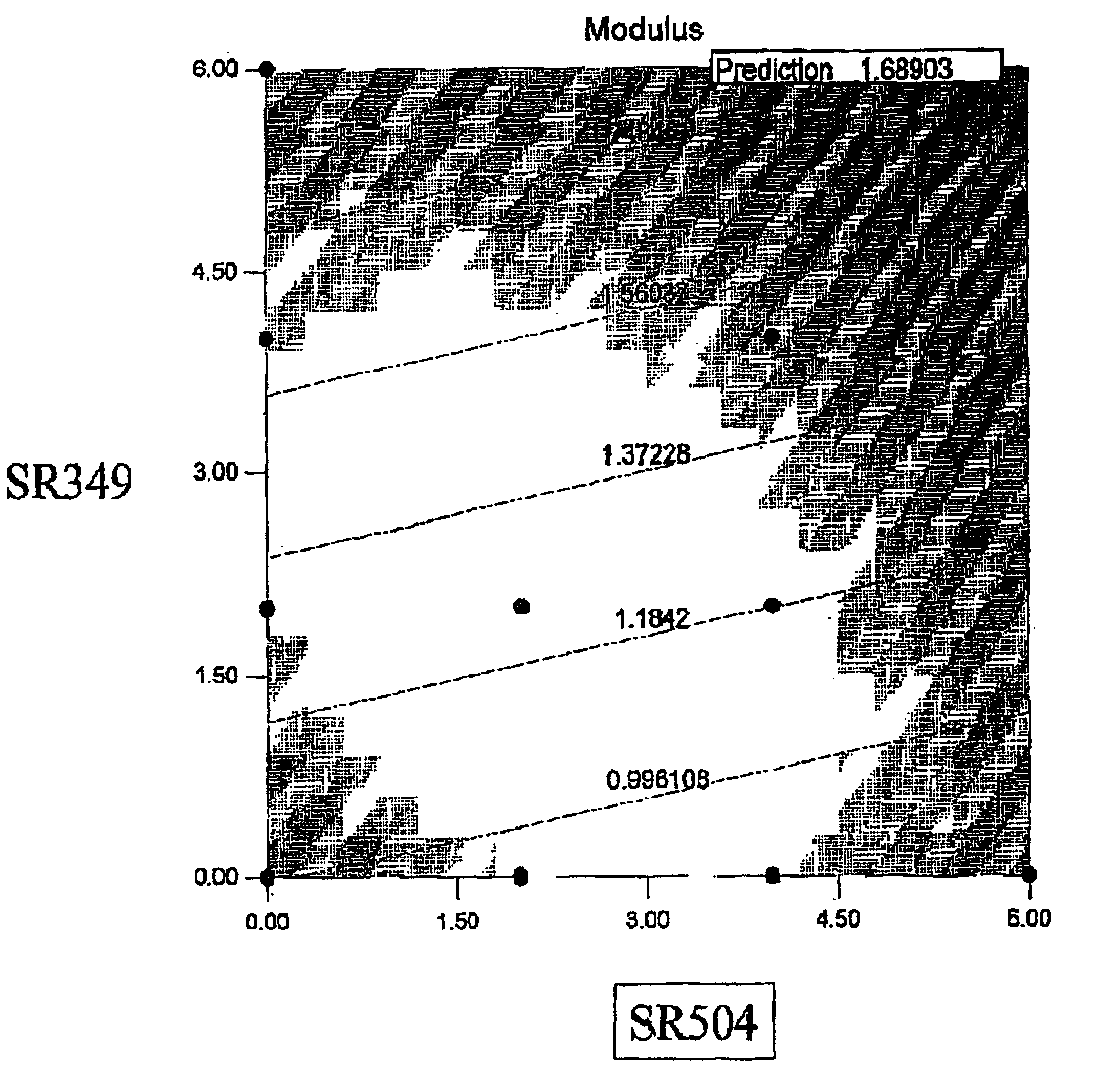Process for preparing uniformly consistent radiation-curable compositions
a radiation-curable composition and process technology, applied in the field of process for preparing uniformly consistent radiation-curable compositions, can solve the problems of adversely affecting the control or magnitude of other properties of radiation-curable compositions, the method of production that is able to provide a series of radiation, and the reaction process itself is difficult to control, so as to reduce the viscosity of the oligomer, reduce the refractive index of the material, and soften the composition
- Summary
- Abstract
- Description
- Claims
- Application Information
AI Technical Summary
Benefits of technology
Problems solved by technology
Method used
Image
Examples
Embodiment Construction
The following examples are given as particular embodiments of the invention and to demonstrate the practice and advantages thereof. It is understood that the examples are given by way of illustration and are not intended to limit the specification or the claims that follow in any manner.
Two processes were used to prepare a first and a second series of radiation-curable compositions having a target modulus of 1.1 MPa, and a target viscosity of 5,000 mPa.s while maintaining a cure speed below 1 J / cm.sup.2. Both series of compositions were prepared by first preparing a series of pre-compositions from ingredients as shown in Table I. Each batch was prepared from a different polyether-polycarbonate aliphatic urethane acrylate oligomer batch. The viscosity of the pre-composition was measured and recorded as the initial viscosity. An in-situ sample of the pre-composition was cured to enable measurement of the modulus which was recorded as the initial modulus. Once the initial viscosity and...
PUM
| Property | Measurement | Unit |
|---|---|---|
| Tg | aaaaa | aaaaa |
| Tg | aaaaa | aaaaa |
| viscosity | aaaaa | aaaaa |
Abstract
Description
Claims
Application Information
 Login to View More
Login to View More - R&D
- Intellectual Property
- Life Sciences
- Materials
- Tech Scout
- Unparalleled Data Quality
- Higher Quality Content
- 60% Fewer Hallucinations
Browse by: Latest US Patents, China's latest patents, Technical Efficacy Thesaurus, Application Domain, Technology Topic, Popular Technical Reports.
© 2025 PatSnap. All rights reserved.Legal|Privacy policy|Modern Slavery Act Transparency Statement|Sitemap|About US| Contact US: help@patsnap.com



